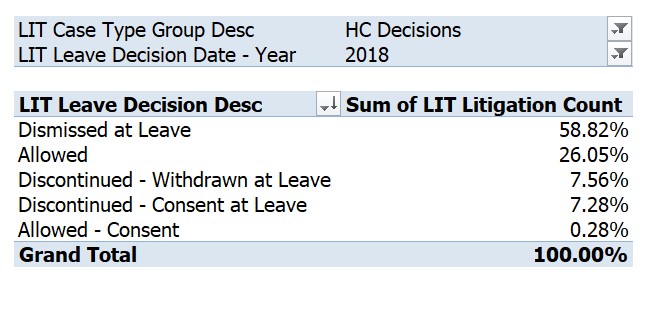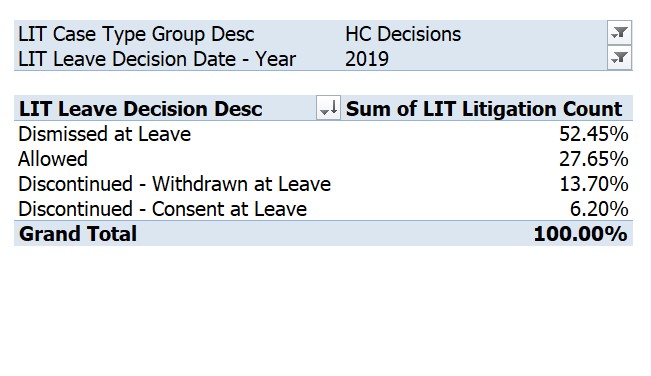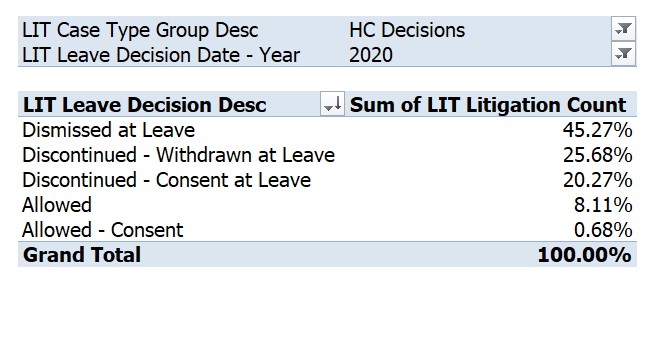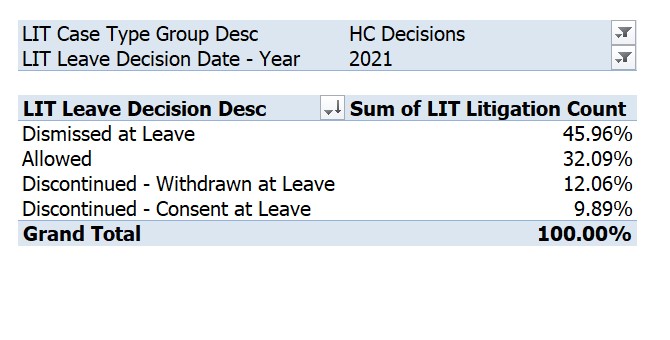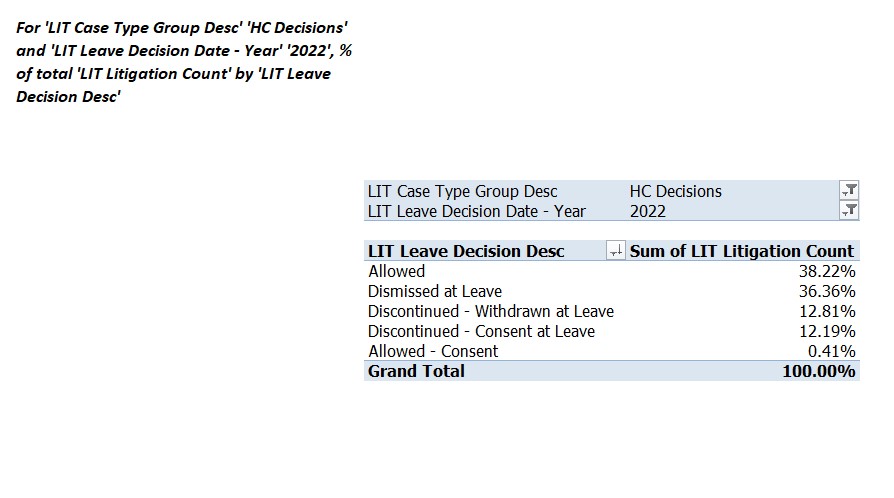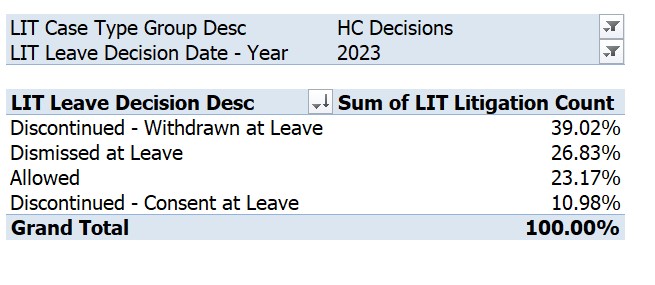A Window into the Humanitarian and Compassionate Grounds Judicial Review Outcomes 2018 – 2022
As we posted about in this blog below, we have received a recent data set from IRCC that appears to be first of its kind in tracking litigation at the Federal Court.
An Early “Lens” Into Predicting JR Outcomes by Country of Citizenship
Today I am going to look at Humantiarian and Compassionate Grounds applications specifically and how the outcomes for judicial review have shifted over time since 2018.
In 2018, there were pretty much two major outcomes – Dismissed at Leave and allowed with both of these outcomes making up nearly 75% of all cases. 14.8% of all decisions ended up in a discontinuance or either consent at leave. The leave dismissal rate was the highest of the five year period at 58.82%.
In 2019, we saw similar outcomes with 80% decisions ending up with this outcome and the other 20% ending up in discontinuances. Leave dismissals were still high at 52.45%.
2020’s COVID-19 year saw a major statisical shift. While the rate of leave dismissals went down, so drastically too did the allowed rate. Was this a result of compassion fatigue from COVID itself? or did the discontinuances (including consents) lead to weaker cases being heard by the Court. The motivation to consent or seek discontinuance during COVID-19 could also have been spurred by trying to limit the number of cases requiring hearing. It is a very interesting year to try and study and breakdown especially in light of how a future Global pandemic could impact Court processes.
In 2021, the leave dismissal rate stayed consistent around 45.96% but the Allowed rate went back up to higher than pre-pandemic numbers. Discontinued – withdraw and consent rates also went back to pre-pandemic numbers.
The year 2022 is when it starts getting really interesting. In this year, and for the first year ever, to have a higher percentage of Allowed cases than any other year. If we are looking at pandemic impact, perhaps this year is when many of the Applicants who had stayed in Canada during the 2020-2021 year and made applications finally had their decisions made and challenged at Court.
Dismissal at leave was at a five-year low and the discontinuance rose slightly.
So what happened in 2023. Interestingly enough, another type of outcome – withdrawn at leave – has been number one (up until June 2023 of this year). Are these because folks are no longer interested in pursuing JRs? Are they leaving Canada or are they being removed? These numbers are even higher than in 2020 during the pandemic when travel restrictions were in place. How many of these are from successful reconsideration requests?
This year’s data (to-date) raises several correspondingly interesting issues.
To me, these stats highlight the inconsistencies and ebbs and flows. It further suggests that in terms of automated data-based decision-making, humanitarian and compassionate grounds decisions and judicial reviews probably should not be implemented until greater understanding of why numbers have been discrepant year to year.
What are your thoughts? What stands out with respect to the data for you?
